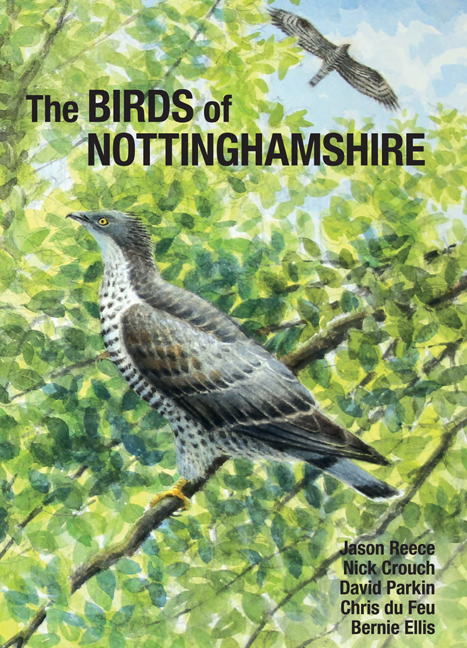Book contents
- Frontmatter
- Contents
- Foreword
- Acknowledgements
- Species sponsorship
- Introduction
- A history of bird recording in Nottinghamshire
- A description of Nottinghamshire and its bird habitats
- Methods
- Species accounts
- Additional Records 2014–2018
- Appendix: Additional and contentious species
- References
- Index
- Miscellaneous Endmatter
Foreword
- Frontmatter
- Contents
- Foreword
- Acknowledgements
- Species sponsorship
- Introduction
- A history of bird recording in Nottinghamshire
- A description of Nottinghamshire and its bird habitats
- Methods
- Species accounts
- Additional Records 2014–2018
- Appendix: Additional and contentious species
- References
- Index
- Miscellaneous Endmatter
Summary
I am delighted to write a few words celebrating this long-awaited publication about the birds of our wonderful county.
As a long-standing member of Nottinghamshire Birdwatchers, I have always had such great pleasure in taking a breather from my hectic life to enjoy the peace of the countryside and, in particular, the birds that bring it alive.
Birds very much reflect our changing world. Who would have thought years ago you would have seen Common Buzzards over Trent Bridge whilst enjoying the cricket, or Little Egrets flying down the Trent on the way to a Nottingham Forest game? Recording these changes and trying to understand their meaning is the prime purpose of all county bird clubs, and this book is testament to the hard work and many hours in the field of hundreds of dedicated enthusiasts.
We all delight in Nottinghamshire's special breeding birds – Hawfinch, Honey-buzzard, European Nightjar and Woodlark come to mind – and the county is rightly famous for them, as it is for those very special rarities that sometimes appear, and the thrill they bring.
I was on the banks of the River Trent at Wilford with the many thousands who travelled to see England's first Cedar Waxwing back in March 1996 but sadly I failed to make it to join the throng to see Britain's first ever Redhead just over my constituency border at Gibsmere. A truly remarkable birding year.
Most important, I think, is the effort many people in the birdwatching community put in unheralded to preserve and nurture our natural environment for future generations. Working in partnership with the wildlife trusts, the RSPB, landowners and farmers, there is now a much greater understanding that a healthy environment benefits us all in so very many ways.
I think of the Barn Owl project in my constituency of Rushcliffe, which year after year – through the work of dedicated volunteers – rings over 100 chicks in over 150 boxes on farms across the constituency. The delight in seeing this magnificent bird is something we must ensure is preserved for the future.
- Type
- Chapter
- Information
- The Birds of Nottinghamshire , pp. viiiPublisher: Liverpool University PressPrint publication year: 2019

